This interview with Gloria Pylant was recorded on November 15, 2002, at what was then the Turner County Alternative School, and once home to Ashburn High School on Gilmore Street. It was part of the Turner County Arts Council and the Ashburn Historic Preservation Commission Oral History Project and was originally captured on tape before being rediscovered years later.
In this conversation, interviewer Shelley Zorn gets Gloria to share vivid memories of growing up in Turner County- from the school fire she witnessed as a sixth grader in the 1950s to the tight-knit community that rallied after it. She also reflects on leaving Ashburn for Boston, then returning home to Ashburn to raise her daughter and begin her teaching career. Her stories about the early years of school integration in the 1970s, along with the lessons she carried into her role as an administrator, paint a heartfelt picture of both the challenges and the resilience of small-town Ashburn.
You can listen to the full interview here:
Below, you can read the transcription highlights, but the full transcription is available in our archive.
Witnessing the burning of the Ashburn School in May 1954
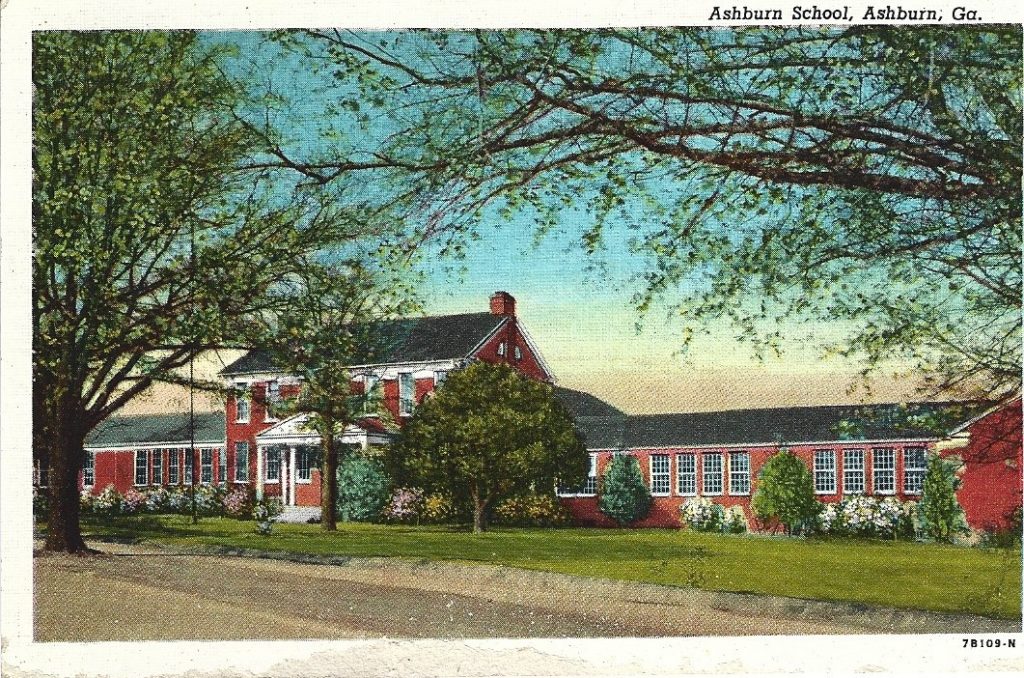
Shelley: So you went to the Turner County School System.
Gloria: I did, right.
Shelley: You went here to this building, right? [Editor’s note: The interview took place at what was then the Alternative School which was the remaining building of the old Ashburn school post fire.)
Gloria: I did. When I grew up in this county, this school was like first grade through, originally 11th, and then changed to 12th. And so I went to this school from the time I moved to Turner County, second grade, all the way through 10th grade. And then we consolidated and made Turner County High School. So I was in the second class that graduated from Turner County High School.
Shelley: Do you have any interesting stories that you remember from school days here?
Gloria: Well, now one thing that might be of interest, I was in sixth grade when we had the huge fire that burned this school down.
Shelley: I was going to ask you that next.

Gloria: Yeah. So that was really unbelievable. Fire trucks came from every county around to help put this out. I mean, it was a huge blaze. There used to be a huge auditorium. Of course, I I’m saying huge because for me at my age, it was huge. If I could see it now, it might not be.
But it was a big building and everything burned except this section of the building that you’re in now. So it made for a really different year. We still had to go to school even though the schoolhouse burned down.
Shelley: So how did you go to school?
Gloria: We got farmed out everywhere. We had some grades that went over to Rebecca. There was an old school that had been closed. They opened back up. We had some grades that went to Dakota. They opened that building back up. We had classes in the churches. I was lucky. I got to go down in the basement of this building. We actually had some classes that could stay in this. And then we were able to keep a few wherever we could find. Some people had to go to the gym. It was just a very disjointed year.
Shelley: Do you remember how you felt, what emotions you felt about everybody being farmed off of your classes?
Gloria: Yeah, it was fun in the beginning. Because you know everybody wants a vacation from school when you’re in sixth grade. So it was fun. But then you got having to go downstairs in the dark and there wasn’t a lunch room. After a while it got to be a real pain. You couldn’t see everybody because everybody was so scattered. So it started off as kind of a great thing, but then it turned out we realized we had to go to the schoolhouse.

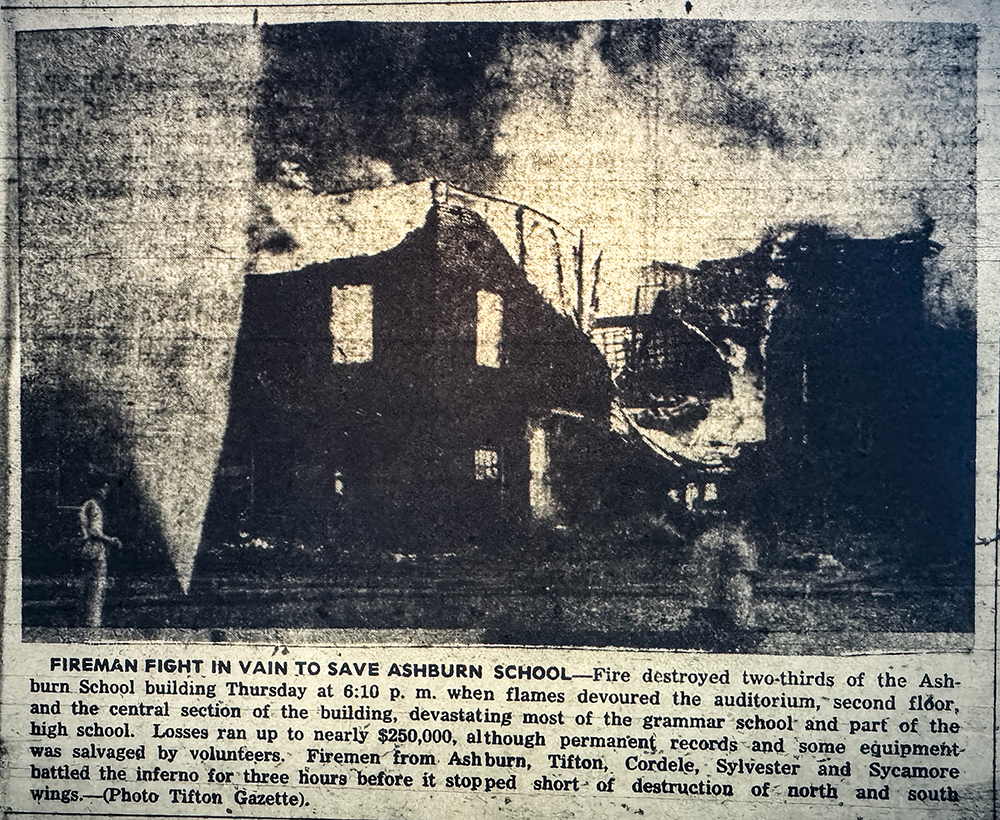
Shelley: Do you remember the day of the fire?
Gloria: Oh, I do.
Shelley: What did they do the day of the fire?
Gloria: It happened at night. The fire late afternoon. I remember no one was at school. That’s for sure. And I remember all the fire trucks. And of course, you know, this was prior to television. We had radio, but we didn’t have a lot of television. So anytime a siren went off or there was any kind of excitement, everybody flocked. So I imagine everybody in Ashburn, Georgia surrounded this block. And of course, you can imagine with all the fire trucks coming in and all the excitement. So you know the horror of what was happening, the fact that this building was burning down, was not the emotion I think everybody was feeling. It was just the excitement of this huge fire and everybody flocking to see, and you know this kind of thing. And then after everything was burning, and you began to hear murmurings, I can remember people talking about, you know, “it’s our schoolhouse” and things like that. And then everybody began to get a little somber about the effect that this was going to have. Because this was a lot of memories burning down for a lot of people. Because most people that were standing around watching, this had been where they had gone to school.
Shelley: What year would it burn? Do you remember?
Gloria: Let me see if I can go back to the year. It was in the early 50s.
Shelley: And do you know how the fire came about? Did they ever determine? Or do you remember at that age how the fire?
Gloria: I don’t remember hearing, and I hadn’t thought to even ask anybody that question since it burned down. It just burned. You know how that just kind of gets in your mind. But no, I don’t remember hearing the cause of the fire.
Shelley: I had heard this building had burnt twice.
Gloria: Yes, years before. And I’m not sure, maybe even in the 30s it might have burned before. Because you know, if you look at photographs, the architecture of the building was preserved. But at one time, it was two stories in the center. And then I think that big auditorium was added in the back. And so the two stories were just where the auditorium had such a high ceiling. But it burned pretty completely down a couple of times.
Shelley: Can you tell me any other experiences you remember about having no school? Or any of the people that you were involved with during that time as a child that you had in school? Teachers?
Gloria: I remember for my brother, especially, you know, we think of this as being rural. But we lived only a few blocks from school, so we never rode the school bus. Well, when the schoolhouse burned down, he ended up having to ride the school bus over to Rebecca. So I remember hearing the experiences about riding the school bus, and what fun that was. And I always thought it would be so wonderful to ride a school bus. But my friends that rode the school bus always said, “No, be glad that you don’t have to ride a school bus.”
Shelley: What about, you said there was no lunch on you during that time. What did y’all do for lunch?
Gloria: We had to walk home for lunch or bring a lunch. But lots of us walked home. Most of my friends walked home for lunch because we lived within a block or two of this building. But I’m sure that the people that rode school buses probably bought lunch and had lunch outside or in some place in the building.
Shelley: Was the mascot the Turner County Rebels even at that time? Or did they have a mascot?
Gloria: No! You know who it was? It was the bears, the bear cats. As I remember, it seems like that was the mascot.
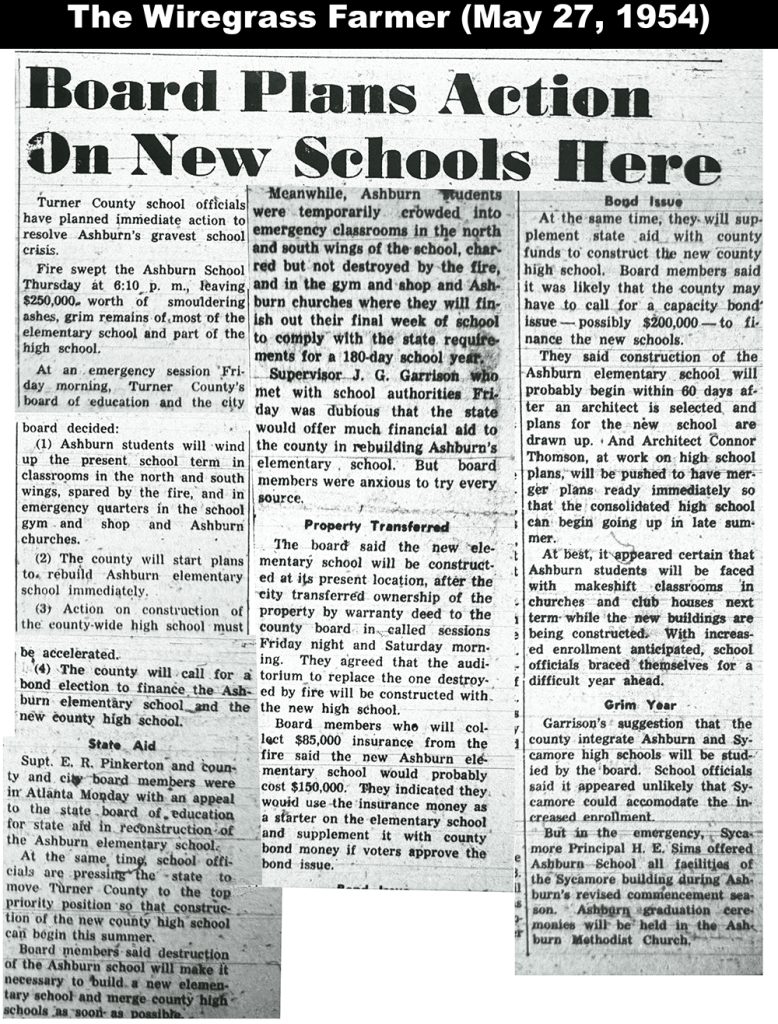
Teaching during First Year of Integration in Turner County
Shelley: Do you have any experiences you think of teaching here at the Turner County School System? Interesting students.
Gloria: I can remember the first fight that first year that I experienced. Because again, you got to remember I’m coming from this very civilized, you know, very polite. [Editor’s note: Gloria worked in an Academic Laboratory in Boston, Mass., before returning to teach in Ashburn.] Of course, the first year that we integrated the schools, no one prepared for the number of kids and all. So I had huge classes, like 37 kids in the classroom. And I don’t think really anybody knew the tremendous developmental delays that some of our African-American children had. So that when they got into the regular classroom, there was a tremendous variety of reading levels in what they could do. So here I had this class of 37 kids. Some of them were very old like ninth graders. And they couldn’t read. And yet I was supposed to teach them science. And to me teaching science was like teaching research science. I mean, I was getting in there and teaching them some science, and they couldn’t read. So I remember just — and I had just never seen the poverty that I saw in the children there. We don’t see that now. But that first year of integration, it was just heart-wrenching.
Shelley: What year did they integrate here?
Gloria: 1970.
Shelley: Do you remember any experiences just from the integration itself, any conflict or anything that happened?
Gloria: The integration here was very smooth. We really didn’t have any kind of incidents. I remember that it was difficult for the children. But as far as any kind of racial incidents, we didn’t have [hard to hear]. I think that was just a good, strong, needed step. So it was some hard work to make it smooth.
Shelley: Okay. Gloria, you had mentioned something about your first year there doing integration. I guess that was 1970, about a fight.
Gloria: Oh, yeah.
Shelley: We got off on something else.
Gloria: Oh, Lord. Like I said, there were about 37 kids in the class. You can imagine the long rows of kids that you’d stand there and look, and you’d say, “Oh, the what?” And so because there was so much trouble trying to find a common way to teach, sometimes, you know, there’d be lags. And I was the first-year teacher, so I wasn’t keeping them engaged real well. But anyway, I was expounding about something that I thought was very important that they should learn about. And of course, obviously, they were not that interested in it because all of a sudden, just out in the middle of what I’m talking about, this girl flies out of her desk across the aisle and attacks this boy. And, you know, I’m standing there saying, “Ah!”
Shelley: You don’t even know how this happened.
Gloria: Yeah. I’ve never seen people fight before. And so, of course, all the class gets excited. Everything becomes complete total disorder. And so there, it’s like, you know, how did this happen? And what do I do? I mean, I was standing there in shock. And so, of course, idiot goes over to get in the middle of the fight and try to break it up. Well, I mean, there’s no — the girl’s just completely beyond any control. She is so mad. Long fingernails. She’s clawing his blood. You know, the boy is, you know, I mean, this is like a boy he’s fighting with now. So he’s slamming and knocking. And everybody in the room is hollering and screaming. And I just couldn’t believe that I was in the middle of that. How it ended, I don’t know. I think they fought until they just literally both were on the ground and desks were all around them. And then finally some other men came to get in there and helped to break it up. And I mean, the kids really hurt each other. And I was so horrified. I thought, you know, it’s not enough money to pay me to do this. I don’t need to be here. But, you know, they got settled down and, you know, you talk about it. And I learned some ways.
Shelley: So this probably wasn’t a racially motivated fight.
Gloria: No, these were two African-American children because the whole class was – all were black. And they had just — he said something about her mama. And that’s the first time I heard that, “her mama.” And if you want two kids to fight, one of them just makes some remark about the other’s mama, and they’re off to the races. So I learned a lot from that.
Shelley: Let me ask you this that I’m curious about. Did the black teachers that were at Eureka, did they come over to this school?
Gloria: Yes.
Shelley: So they integrated teachers also?
Gloria: Yes, they did.
Shelley: And did the classrooms become part white, part black?
Gloria: There were some classes. Again, you know, schools have a way, especially in the ’70s, of segregating the poor through ability. And unfortunately, many times that led to racial segregation, too. So that you would have a class that was perhaps only of a grade level, and it would be majority white with some black. And then those classes — and this was because of the poverty – classes that were much, much lower usually were all black. And they might have one or two classes. But again, it went back to those poverty things that caused that level of poverty. It took, I would say, in my experience, it was about 10 years before we began to see almost the middle ground as far as the poverty, the way the kids came to school. You know, when I first started teaching, we literally had kids that came and not had a bath in a week or more. And they wore really soiled clothes. You know, and you’ve got to remember, in our county, we were still pretty much agricultural. And some of our poorest people actually lived in homes that they had no inside plumbing. You know, they got their water from a well. And so these were kids that were coming from those homes.
Shelley: Were black and white children coming to school in that condition?
Gloria: Yes, but much more black than white. There were some isolated families.
Shelley: You said you learned a lot that first year. Can you think of anything in particular, any memories, anything you learned in particular?
Gloria: Well, I learned that I couldn’t teach science the way I wanted to, that I had to really get more to the level that the kids were. And that was quite an experience, applying many different things to make the class want to learn science into a choice. And I learned a lot. I had been away from teenagers. You know, I’d been in a completely academic environment. I came back teaching middle school. And I just had to relearn a lot about children. I’m trying to think of some specific things. Of course, I learned a lot about the black culture. Because even though I grew up in the South, I grew up in a time of total segregation. And I remember even when I was in the North, and there was so much in the ’60s about segregation, they would ask me a question, I didn’t remember it. I mean, you know, I knew there was a water fountain for the white and a water fountain for the black, but that’s just the way it was, and I never thought about it. And I knew that there was a section upstairs for the black people sitting in and the white people sat downstairs, but that’s just the way it was, and I never thought about it.
Shelley: It didn’t seem like a big deal.
Gloria: No. And so when I was asked questions, I realized that I had never really looked at where I lived. And when I came back and we were in the midst of desegregating, it was a real questioning time for me. And of course, I was very idealistic at that time, you know. And so I had come from Boston, Massachusetts, and the Kennedys were there, and everybody was very pro-segregation. [Editor’s note: more than likely meant pro-integration] And then I was back in Ashburn, Georgia, and my dad said things like, when I talked about a student leaning over them to help him, he said, “You didn’t get close enough to smelling, did you?” I mean, you know, it’s just – And people just had no concept here of what they were saying and what their attitudes were. And so it was, you know, surreal. I owe the experience for me to come back from that to where it was accepted and then once again to look and see.
Shelley: But this time you were questioning it. What was normal before.
Gloria: I was questioning it, and I was seeing the difference.
Shelley: What are some of the things you think that you questioned?
Gloria: Well, you know, there were definitely injustices. Like, the white teachers were automatically assumed to be better teachers, and yet we had some excellent black teachers. And so it bothered me that, you know, some of the way that staff was really [unknown]. Yeah, and that was just – That was just the way it was like. You know, the white kids were assumed to be the smartest, and yet there were some very bright black kids. And, you know, it was real hard to work within that context. And, you know, trying to be fair and trying to, you know, do just things. It took a lot of thought, a lot of reflection. You had to think about what you were doing.
Shelley: Do you think that has affected you now as an administrator? To have gone through that?
Gloria: Yeah, oh, I think it’s made me more sensitive to kids that are different, whether it’s because of handicap or, you know, background or culture or whatever. Yeah, I think I did think about that, maybe a little bit more because of having gone through that time. And I think sometimes, yeah, I think I do still think about if I’m putting a committee together,
I want to be sure that all groups are represented. So I think it had a profound influence.
About The People of Turner County Project:
This is an oral history project that works to both preserve, document, and celebrate the people of Turner County and the history through the stories of those who have experienced it.
This project collects oral histories of people who have lived or worked in Turner County, Georgia.
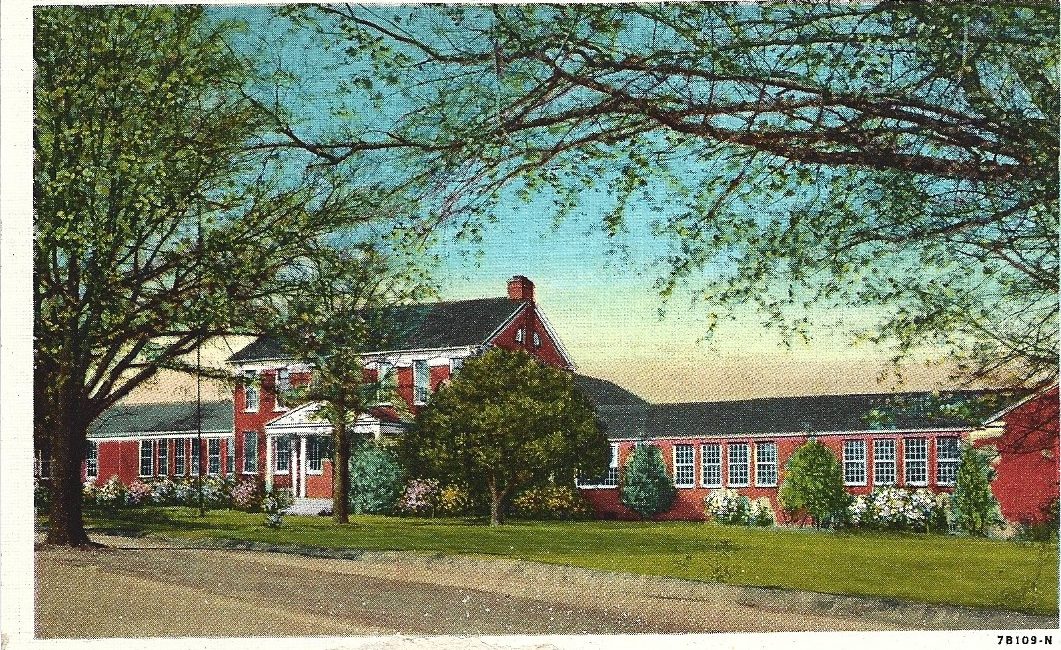
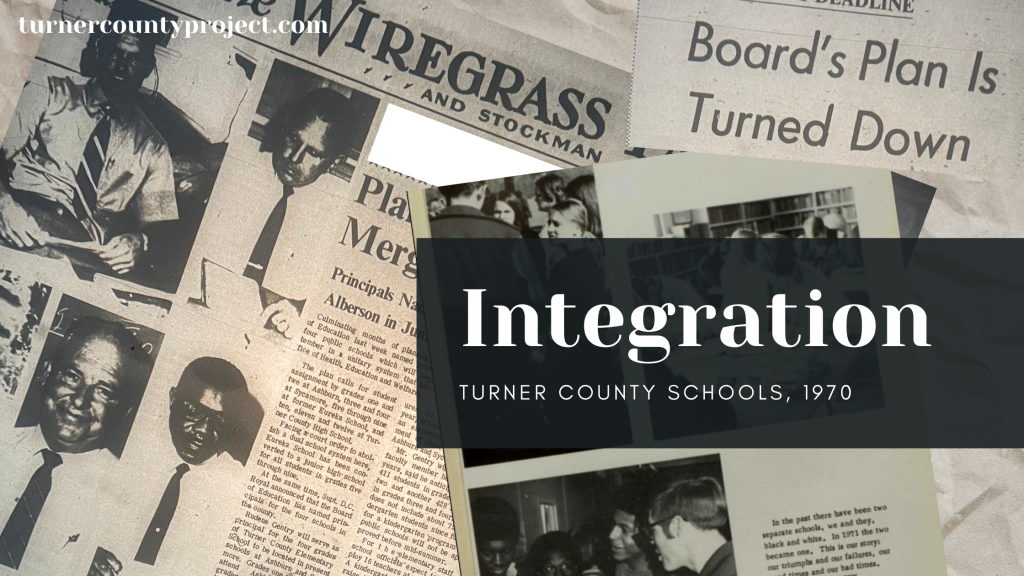
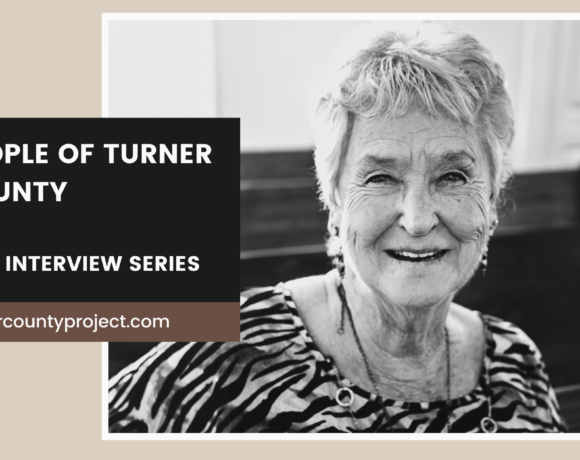
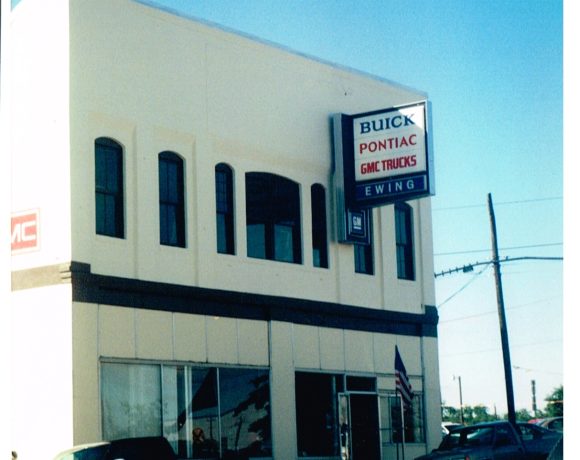
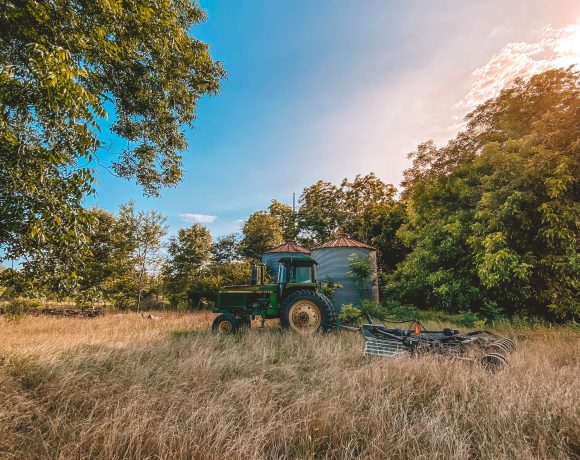
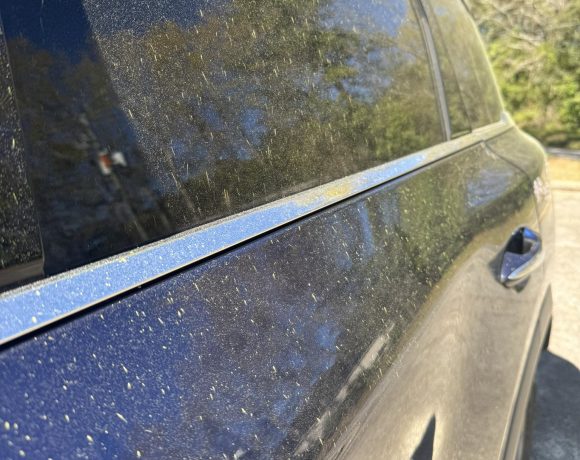
Leave a Reply